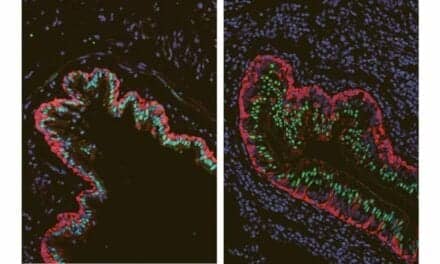Study results from researchers at the University of Wisconsin–Milwaukee and United States Drug Testing Laboratory Inc. (USDTL), of Des Plaines, Ill., demonstrate that the direct alcohol biomarker ethyl glucuronide (EtG) has promising ability to differentiate between various levels of alcohol consumption when analyzed in fingernail and hair specimens.
Reinforcing earlier research, the study also demonstrated the effectiveness of EtG testing in alternate specimen types, especially fingernails, as an objective long-term alcohol biomarker. The researchers published their findings in the online edition of the journal Addiction, which will also publish the study findings in an early 2014 print issue.
Ethanol is metabolically converted to EtG in the liver, which can then be captured within the keratin fibers of growing fingernails and hair. The detection of EtG in hair as a measure of chronic excessive alcohol consumption (as supported by the Society of Hair Testing) has become more prevalent in the drug and alcohol testing industry in the past decade. In 2011 USDTL developed an assay to analyze fingernails for the EtG metabolite. Scientists from USDTL secured funding from the National Institute on Alcohol Abuse and Alcoholism (NIAAA) to compare the effectiveness of EtG analysis in fingernails to EtG hair testing. Researchers from the Center for Addiction and Behavioral Health Research at the University of Wisconsin–Milwaukee lent their expertise in alcohol and substance abuse research to the study.
The research examined paired fingernail and hair specimens from more than 600 students attending a Midwestern university. The students were surveyed for their drinking history—how often and how much they drank—over the 90 days prior to the study to establish the level of alcohol consumption associated with each set of samples. Fingernail and hair analysis is able to detect EtG that has been captured by the samples within the previous 90 days of growth. The study authors theorized that college students would be more honest about their drinking habits because of a reduced stigma among their peers associated with drinking. Statistical analysis suggested that assumption was correct.
Based on their answers to the alcohol consumption survey, subjects were classified into one of three drinking categories: 1–14 drinks per week, 15–29 drinks per week, or 30 or more drinks per week. Each subject’s fingernail and hair specimens were then analyzed for the presence of EtG. The study authors statistically analyzed the assay results to see how effectively EtG analysis in fingernails and hair could identify alcohol consumption by subjects in each category.
The results demonstrated a very high efficiency of EtG analysis in both fingernail and hair samples to qualitatively identify any level of drinking. Fingernail analysis was 100% effective for identifying alcohol consumption in the highest category (more than 30 drinks per week—’high-risk’ drinking as classified by NIAAA). Some indications from the study results also suggest that EtG analysis in fingernails may hold promise as a quantitative analytical tool to distinguish between the different levels of alcohol consumption; however, further research is necessary to develop this potential use of fingernail EtG testing.
For an early view of the study findings, visit Addiction. For more information on EtG analysis in fingernail and hair specimens, visit United States Drug Testing Laboratory Inc.




